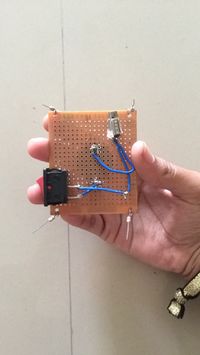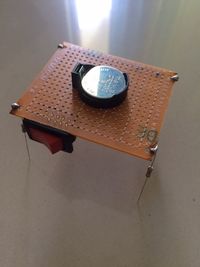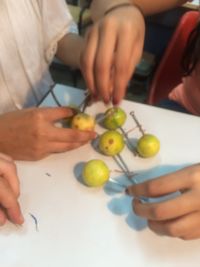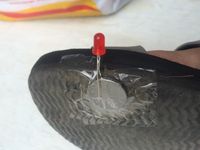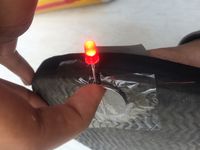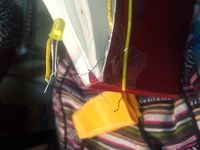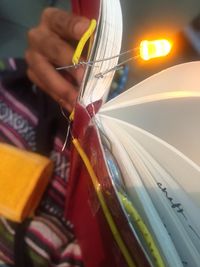Mizba
My First Robot
Day 1 of Sensors, Probes and Detectors. I was extremely excited. My facilitator, Yashas, only tells us all that we were going to build a robot. And I was a little nervous. I had absolutely no prior know-abouts regarding Electronics, except in school though. What I had studied in school was already hazy and I couldn’t contain my excitement, on day one of this class, in anticipation of learning an entirely new subject. This was my first experience with learning how to solder. Truth be told, mine was the worst kind of soldering in the class. Although, eventually, I got the hang of it and now, I absolutely enjoy using the solder iron. We were only given instructions as to the making of a robot. Honestly, I didn't understand much about what I was doing, but I was only following the instructions. I was the last to finish making my robot, but it was not at all in vain. I took time to understand the logic behind why we did what we did. That was a fulfilling day, alright.
Lemon Battery
This was our first weekend and it was time for our first weekend homework. When I heard that we were to make a battery out of lemons and light up a LED, I was excited as well as tense as to how I was going to make a lemon battery in the first week itself, without any instructions or any knowledge about Electronics. I resorted to YouTube and found that all it took was a big, raw lemon, a copper wire and a nail. I only thought that it was that easy. When I actually tried it, I faced a lot of trouble acquiring enough voltage to light up the LED. When, finally, in class four of us combined our lemon batteries, we finally got very little voltage enough to let the LED glow very dim.
Switch
I particularly enjoyed the rate at which the class progressed. Many have complained that it was all going too slow. But on the other hand, I liked the systematic way of teaching in the class. One component per day. Understood well. Especially, for someone like me who needed time to get acquainted with the rules and everything else within the world of electronics. The first component we learnt of was a switch. We all know that a switch, technically, is something that helps us complete any circuit. Now keeping this in mind, we had to make our own switch. We made two types of switches. One, where an LED would light up with pressure put on one loose end of the circuit to sit onto the other end. Basically, we attached this circuit to a slipper, wherein when there is pressure put down by the foot, the LED lights up. The second kind of switch we made was for a book. When the book was opened, the two loose ends of the circuit would meet and thereby, complete the circuit, resulting in the LED lighting up.
Breadboard and LEDs
Next, we learned how to use and work on a breadboard. I had never seen a breadboard before, let alone working with one. It took me quite a while to understand how to build circuits on the breadboard. Today, I think breadboards are awesome! I used to see a lot of my classmates work in class like they knew exactly what they were doing and that they already understood what had been explained. I felt out of place for a few days in the beginning because I thought I was the only one who didn't understand too soon. Slowly, I began to cope and my levels of interest rose. The most basic thing to use as an element to understand anything is an LED. Here too, we started with making a very simple circuit by just lighting up an LED. We had to use the 9V batteries for the circuit. Since LEDs cannot sustain 9V, we had to make use of a resistor. When we were good with making the circuit for one LED lighting up we made one with two or three or four LEDs. The basic principle is that an LED has two legs; one longer than the other. The longer leg is connected to ground whereas the shorter leg goes to the positive source.
